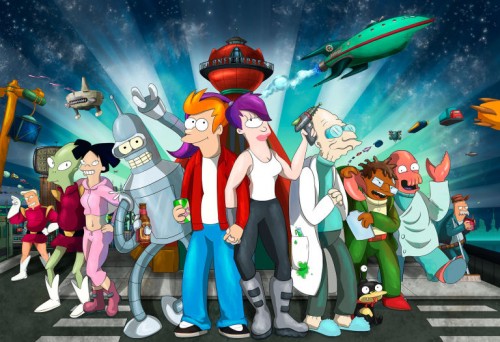Catering companies across the country are struggling to find employees. Candidates aren’t showing up for interviews and even when someone gets through an interview and accepts the job, they sometimes don’t show up for their first training shift! No matter where your catering business is located, this shortage in staff and job candidates is trending across the country. To overcome it, take this approach: good employees are not found, they are trained!
Finding potential employees feels harder right now than usual because of two key reasons. First, unemployment is the lowest it has been in a decade—4.3 percent—which translates to fewer people actually looking for work. Second, the most common age demographic for the restaurant and catering industry is the millennial generation, which presents its own challenges. Although many people are quick to put down millennials, in an article published by the Harvard Business Review titled, “What Millennials Want from a New Job,” authors Brandon Rigoni, Ph.D., and Amy Adkins say, “Millennials fundamentally think about their role as a stepping stone and a growth opportunity. But they also want to feel deeply committed to their role and to work for a manager who will invest in their development, which isn’t entirely different from what other generations value.”
Yes, anecdotal evidence says this generation presents challenges, but we’ve said that about EVERY new generation. The key with millennials is not to be hung up on how different they are, but like the article above says, look at the values this group of employees can bring to the table for your business. These employees want:
• The opportunity to learn and grow
• To work for an employer that has created a positive work environment with good management
• To like the work they do
• To receive a good wage
None of these requirements should be hard to meet for a well-functioning business. Yet, creating good employees is a challenge for all catering businesses. That is why I encourage a three-step approach:
1. Find candidates that are a good fit for your restaurant based on personality rather than experience. If an employee is excited to be a part of your company, and eager to learn, that’s a great place to start creating top-notch team members.
2. Understand the importance of training.
3. Create a great training system for your business.
Step 1: find candidates
When it comes to finding candidates, there are, of course, the go-to job websites such as CraigsList.com to sites like SnagAJob.com and Indeed.com. These sites are necessary, but I have found that there is a missing piece to the equation. It’s not just about getting warm bodies to walk through your door to apply, it’s about getting the right candidates. This is why I like sites like ClearFit.com that not only post your job to multiple sites, they add a personality profile test to the application process. To submit a resume or fill out an application, the candidate must complete and submit a personality test. What these kinds of tests do is let the hiring employer know if the potential candidate is a good fit for the job. It doesn’t tell you who to hire, it simply tells you who would be best to interview because they would potentially be a good fit for the job. Let me be perfectly clear, it does not solve the challenge of the person actually showing up to the interview or the job itself. That is just a hazard of today’s circumstances.
To increase the chances of a good match from your pool of candidates, make sure they meet these five criteria:
1. Pay: Are they asking for a salary in your range?
2. Availability: Do they meet your scheduling needs?
3. Transportation: Do they have a dependable way to get to work on time for the shifts that are needed?
4. Appearance: Do they understand that appearance is a condition of employment as far as being well groomed?
5. Culture: Do they fit your company culture?

Step 2: understand importance of training
Why do I emphasize training as the key to creating good employees? First you must understand what happens when you ignore the importance of training.
In a study called “The Spirit of Service,” done by the National Institute for the Foodservice Industry (NIFI) studying “Why customers leave” more than a decade ago, they found that customers don’t return to a restaurant for six primary reasons:
#6 – 1% Die
#5 – 3% Move out of the area
#4 – 5% Find new interests and friends
#3 – 9% Change for competitive reasons
#2 – 14% Change because they are dissatisfied with the restaurant
#1 – 68% Encounter an attitude of indifference by one or more employee
This study shows that 82 percent of customers who no longer dine with you or hire you to cater for them don’t call on you again because of the people you selected, you hired, you trained, and you manage every day —82 percent! Need another reason why training is so important?
In March 2017, the National Restaurant Association reported that “Hospitality employee turnover rate edged higher in 2016” to 70 percent. To outline why a high turnover rate is so bad for your business, consider a report from the Society for Human Resource Management (SHRM), “Human Capital Benchmarking Report,” which says the average cost-per-hire for companies is $4,129.
In a nutshell, having poorly trained staff on your team costs your business tens of thousands of dollars annually in lost revenue. Plus, high-turnover robs you of your hard-earned profits quickly. To overcome these challenges, I say, again, you need a great training system.
Step 3: create a great training system
What does a great training system look like? Here are the key components you need in place:
1. Job Description: A great job description is more than “here’s what the job is.” It’s detailed and includes what the job is, how to do it, how well you want it done, and by when. For example, a banquet catering server job description might include, “Maintains a positive attendance record by reporting to work for assigned shifts 10 minutes prior to scheduled time, switching and finding replacements for no more than five percent of scheduled shifts, following company time off and illness procedures, and having a zero percent no call/no show record.”
2. Daily Tests: New hires do the most damage to any business when they are poorly trained and no longer have a trainer with them. With daily testing, if they don’t pass the daily test, they don’t get to move on to the next day of training. And even if you give a new hire extra days of training until they get it, you still win because they finish training 100 percent ready.
3. Evaluations: Not the ones with a 1–10 grade scale, but instead use the exact language from your job description. The employee either Exceeds, Meets, or Does Not Meet the standards you trained and tested them on.
4. Trainers Guide: Having a new hire simply follow a longtime employee around for a shift or two does not work. They need to have a trainer who is following the same training plan that every employee follows. Consistency in training is critical for the success of your employees and in-turn your business.
In summary, good employees are not found, they are trained. The benefits of a great training system are huge! They increase sales by having happy guests/clients. They lower turnover rates, saving you thousands. They demonstrate to your employees you are committed to helping them learn and grow. A training system in place means managers manage consistently to a single standard, creating a positive work environment. And finally, when an employee knows their job, they are more likely to enjoy the work they do. All you have to do is add in a competitive wage and BOOM; you have a team of good employees. Low employment rate and generational differences are no longer obstacles.
 You can find David Scott Peters at TheRestaurantExpert.com.
You can find David Scott Peters at TheRestaurantExpert.com.
Want to learn more about staff development and management techniques? Registration is open for Catersource Conference and Tradeshow 2018. Click here to view the tracks you are most interested in!



